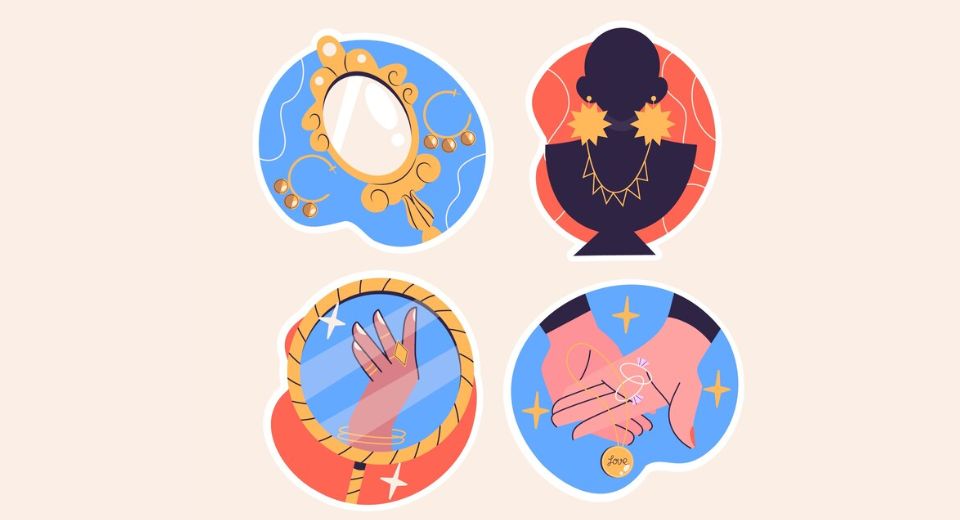
Oct 11, 2024

According to Metastat Insight, the CEE jewelry market has been vigorously changing over the past two years. Such trends are reflected by broader, global developments within society and economics as well as changes in consumer preferences in the region. Traditionally, jewelry had cultural association in countries of Central and Eastern Europe: with prosperity, status, or family connections. As lifestyles are changed, as tastes are, markets shift toward a broader variety of designs, materials, and purchasing habits. The landscape of jewelry across the CEE region evolves dynamically and speaks to growing globalization of fashion and influence by modern consumer preferences.
Traditionally, the taste of CEE jewelry was defined by local customs and available natural resources. Gold and silver, among precious metals, and gemstones are materials extensively used in creating intricate objects many of which are passed from generation to generation. Such antiquities still hold great value but an increasingly modern trend has been on the rise. With higher social media, e-commerce, and global travel, consumers today are more exposed than ever to global trends that affect their purchasing decisions. Young consumers, for example, prefer lighter, more customized items rather than heavy, ornate ones. Old-world craftsmanship with newer contemporary designs have resulted in the emergence of a niche that is diverse in nature.
The increase in disposable incomes and growth in economic prosperity in the CEE region will surely be an important influence on this new market. There is a lot of available spend and the desires of the consumers are clearly translated into the way they are choosing to buy with the growing economies in countries like Poland, Hungary and the Czech Republic. Many the purchasers today want uniqueness and exclusivity in designs as well as top-class craftsmanship, which means fewer mass-produced pieces. Independent designers and small jewelry brands have benefited from this trend in selling custom or limited-edition pieces to the demanding market.
The surging e-shopping is also rapidly expanding the jewelry market in CEE. For that reason, online stores allow buyers to access more products at lower prices than that offered by conventional bricks-and-mortar stores. More importantly, shopping on the Internet has eradicated many of geographical barriers that otherwise would limit people's access to international brands. This trend has enabled consumers to access new designers and fresh trends from the confines of their homes, hence further growth in the market. Established brands and new entrants in the market have sensed this opportunity and plunged into digital approaches to reach out to their respective target market. Undoubtedly, the shift towards e-retail has been remarkably visible after the COVID-19 outbreak, where most buyers embraced e-commerce due to the temporary closure of physical stores.
Aside from e-commerce, sustainability and ethical sourcing were also an important consideration for CEE consumers. Against the general backdrop of increasing global awareness of environmental and social concerns, people are getting more attentive to the origin and production process of their jewelry. Those brands that can speak to such commitments to sustainability-for example, offering jewelry made with recycled metals or sourcing gemstones responsibly-have now found favor with a growing share of the market. This is in tandem with broader trends because consumers worldwide are growing ever more conscious of social and environmental impacts that their buying decisions are causing.
Local jewel brands in the CEE region also pay attention to this change in values for, in terms of sustainability, transparency, or a reduced environmental impact through responsible sourcing, waste minimization during production, or the use of eco-friendly packaging elements, these issues are being addressed. Local brands start cooperating with artisans from the region and merge artisanal techniques with modern designs, which creates jewelry as well as a responsibility with ethics in its wake.
International presence benefits another important segment-the luxury demand in the jewelry market of CEE. As high-end retailers expand their footprints within the major cities of Warsaw, Prague, and Budapest, the luxury jewelry demand increases. More affluent customers having a higher disposable income want to spend on all globally recognized brands, and others want to balance this off with local jewelry pieces that are made locally, bespoke items. Luxury market remains strong as consumers wish to invest in pieces that will serve as status symbols but do not depreciate.
Metastat Insight believes the future for CEE jewellery continues on the path of growth and diversification. As the overall economic climate improves and consumer preferences evolve, the market is likely to become more relevant in terms of how sustainability, uniqueness, and effortless combinations between traditional and contemporary design elements become important market factors. The combination of culture heritage with a modern sensibility seems promising for the industry. The guarantee that both old techniques and new methods will place themselves in the jewelry boxes of consumers across the region. Actually, with the launch of new trends, and old ones taking more deeply root, markets are likely to be diversified even more in the context of catering to more and more demanding and fastidious customers.
Drop us an email at:
Call us on:
+1 214 613 5758
+91 73850 57479